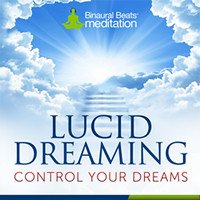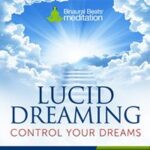Dutch psychiatrist and writer Frederik Van Eeden first coined the term lucid dreaming in the 1880s.
Eeden's research demonstrated that during lucid dreaming the dreamer was able to manipulate their experiences within the dream environment.
More recent research studies have closely analyzed the phenomenon and properly defined the measurable differences from being awake and typical REM sleep:
lucid dreaming constitutes a hybrid state of consciousness with definable and measurable differences from waking and from REM sleep, particularly in frontal areas (1).
Lucid dreaming is essentially a hybrid state of consciousness wherein we become self-aware during a dream.
Typically, when we dream, we have no control over our actions or the actions of others. It's like being a fly on the wall; we watch ourselves play a role in the dream.
However, in a lucid dream, we can take control of the character playing that role, so to speak.
To experience lucid dreaming, we need to be in a state of sleep while remaining aware. It may sound complicated, but in reality, most of us will likely experience at least one accidental episode in a lifetime, making it very possible to achieve.
If you have ever experienced a dream where you had some level of awareness that you were dreaming, you have probably experienced lucid dreaming. This awareness is common during light sleep episodes, such as those you might experience during an afternoon nap.
How Our Lucid Dreaming Meditation Works
Sleep follows a specific brainwave cycle blueprint. Although it may vary slightly each night, we cycle through the same frequency zones during sleep.
Theta waves are present during sleep stages 1 and 2, which are considered light sleep. On the other hand, delta waves are the slowest brainwaves and are prevalent in deep sleep during stages 3 and 4.
Understanding this brainwave pattern is essential for comprehending how lucid dreaming can occur and how to achieve it.
Our binaural beats Lucid Dreaming meditation mimics the sleep cycle process, but it offers a specific advantage that can aid in lucid dreaming.
To begin with, the music employs Theta frequencies to guide you into a calm, relaxed state, which is crucial for lucid dreaming.
Theta is often referred to as the meditation state because Theta waves are abundant when meditators access deep meditation.
Moreover, deep meditation stimulates the third eye, the gateway to inner realms and higher consciousness spaces.
In this state of higher consciousness, we gain awareness beyond our everyday physical world experience.
Once the music has induced a deeply relaxed Theta state, it gradually transitions into the Delta frequency zone, hovering just above the point where you might fall asleep.
This balance keeps you in a state of limbo, similar to a cat-nap-like sleep state where you are almost asleep and can dream lightly, but a noise or someone calling out your name could wake you.
If you've ever fallen asleep and then awakened a few minutes later because you dreamt that you stepped down a hole or off a ledge (and you physically felt yourself taking the step), you'll understand the limbo state I'm referring to.
In this state, your subconscious remains awake while your conscious mind remains asleep. This is a kind of mind trick that allows you to access lucid dreams.
How to Lucid Dream
Dream studies have indicated that the best time to attempt lucid dreaming is after waking up. This might sound a bit counterintuitive, but it actually makes perfect sense.
At this time, the brain is already in a sleepy state, which makes it easier to fall back into a semi-like sleep state while maintaining the awareness required to control your dreams.
Consider this scenario:
Think about those times on a weekend when you have a lie-in, or when you're a little sick and have a day off to stay in bed.
You may recall waking up in the morning at your normal time and then falling back into a light sleep where you're somewhat aware of the fact that you have woken up and are in bed, but you're also having a vivid dream – so vivid that it seems real.
In this state, you are very close to lucid dreaming because you are dreaming, but part of your brain is aware of where you are and what you are doing.
This is essentially the crossroads of lucid dreaming and where you can access this special state of consciousness.
Therefore, we recommend that you listen to the Lucid Dreaming meditation just after you wake up in the morning or when you lay down to take an afternoon nap. For beginners, this is when you are most likely to experience a lucid dream.
Download Lucid Dreaming today and create your own dreamworld, with your own environment, characters and stories!
———
Once you have purchased this product, further advice on how to lucid dream can be found in this article.
Please note: Although lucid dreams are perfectly safe, it's important to be aware that they can be vivid and feel very real. As a result, when you wake up, it may take a minute or two to readjust to the circumstances of the physical world.









